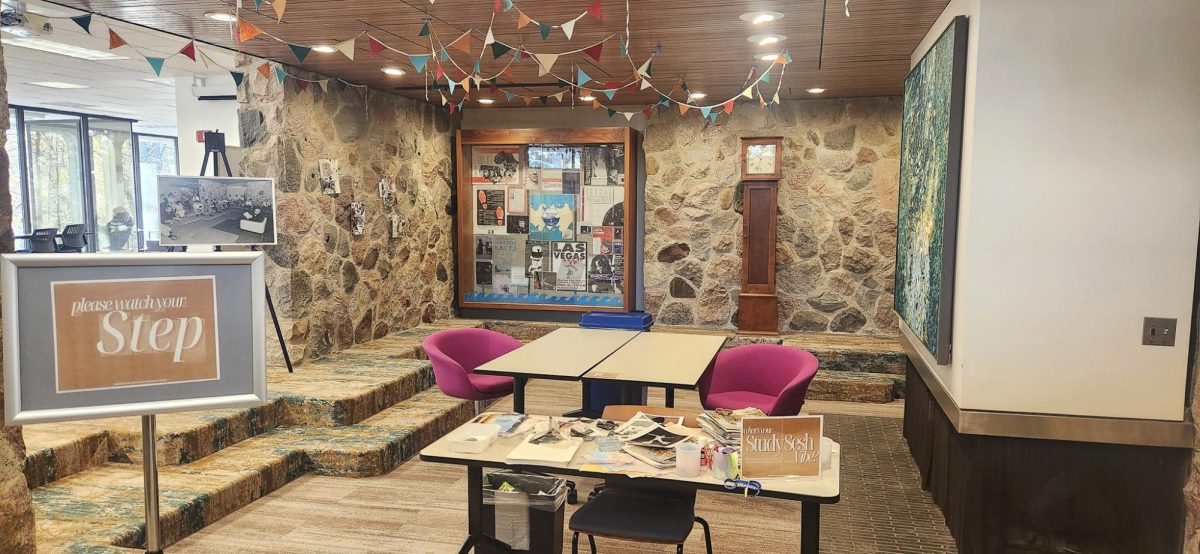Grand Valley State University’s Special Collections & University Archives closed out American Archives Month with a multi-day celebration called Vibes Fest.
The purpose of American Archives Month, according to the Mid-Atlantic Regional Archives Conference is to “raise public awareness about the importance of historic documents and records.”
Vibes Fest took place at the “pit,” a conversation pit, in the Seidman House, the building in which the Special Collections and University Archives are located. The “pit” used to be an event space for speakers and students to congregate in the university’s past.
During the last week of October, students were encouraged to engage in hands-on activities organized by the archives.
Students were able to create “vibe boards” that reflected their personality and the environment where they study. Available for creating the boards were duplicate photographs and other materials from collections and the archive that no longer needed to be preserved.
Participants were also able to vote for their favorite of four staff-created academic aesthetics. The aesthetics, which include light, dark, chaotic and spirited academia, were inspired by primary source material from collections such as regional history, student life and decorated publishers’ bindings– books with ornamented and embellished covers.
Zoya Deen, a student worker at the archives, said the goal for Vibes Fest was to create a welcoming environment for students and to educate them on the archives and its collections.
“A lot of people may not know how to interact with primary sources or archives,” Deen said. “Primary sources are a huge part of understanding history and the world around us, so interacting with those in an educational manner is really important.”
Leigh Rupinski, Archivist for Public Services and Community Engagement at GVSU, said the activities provided a great introduction to the importance of primary sources for students.
“It’s great to use secondary sources in research, but primary sources force you to think critically and provide greater context,” Rupinski said. “We had a rare opportunity with Vibes Fest to let students engage with our primary sources and collections directly.”
Primary sources are important for research and gaining a deeper understanding of history. According to the Library of Congress, “primary sources are incomplete snippets of history, each one represents a mystery that students can only explore further by finding new pieces of evidence.”
Rupinski said critical thinking is an essential component of research when it comes to identifying potential misinformation.
“Just because something (a secondary source) was published doesn’t mean it (is) true,” Rupinski said. “You have to look at primary sources and ask- what am I reading, what do the words mean and how does bias come into play?”
On top of the education in primary source literacy, Rupinski said another important goal for Vibes Fest was to inspire students creatively.
“We also (wanted students) to think about how one day (they) might create material that will be important and worthy of preservation,” Rupinski said.
Students are always encouraged to visit the Seidman House and speak with an archivist to learn more. Deen said she hopes students will take an interest in the archives and pursue research.
“Archives are for everybody,” Deen said. “It gives you the opportunity to see a life in the material and gives people the imagination necessary to really understand the importance of what they’re looking at.”










